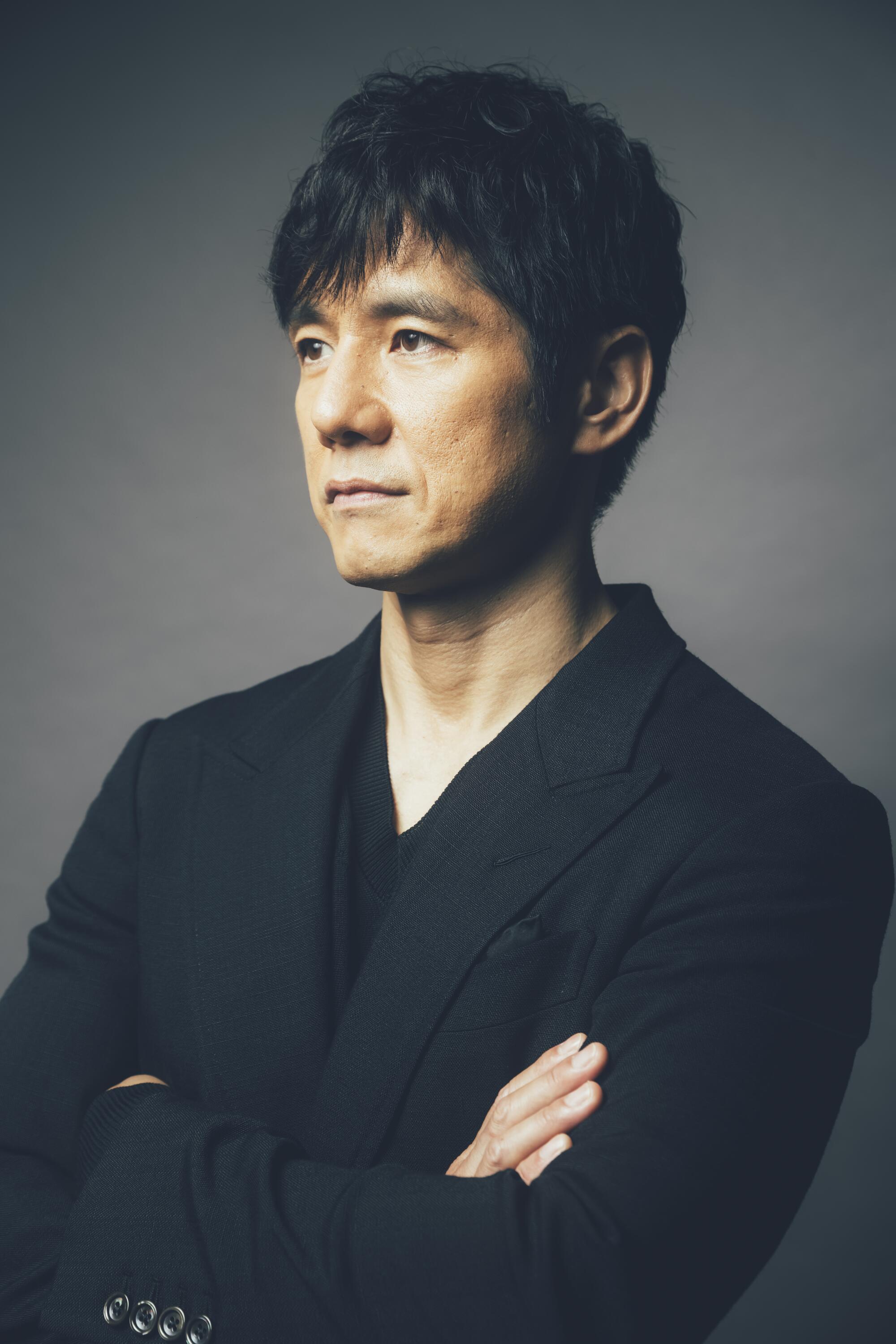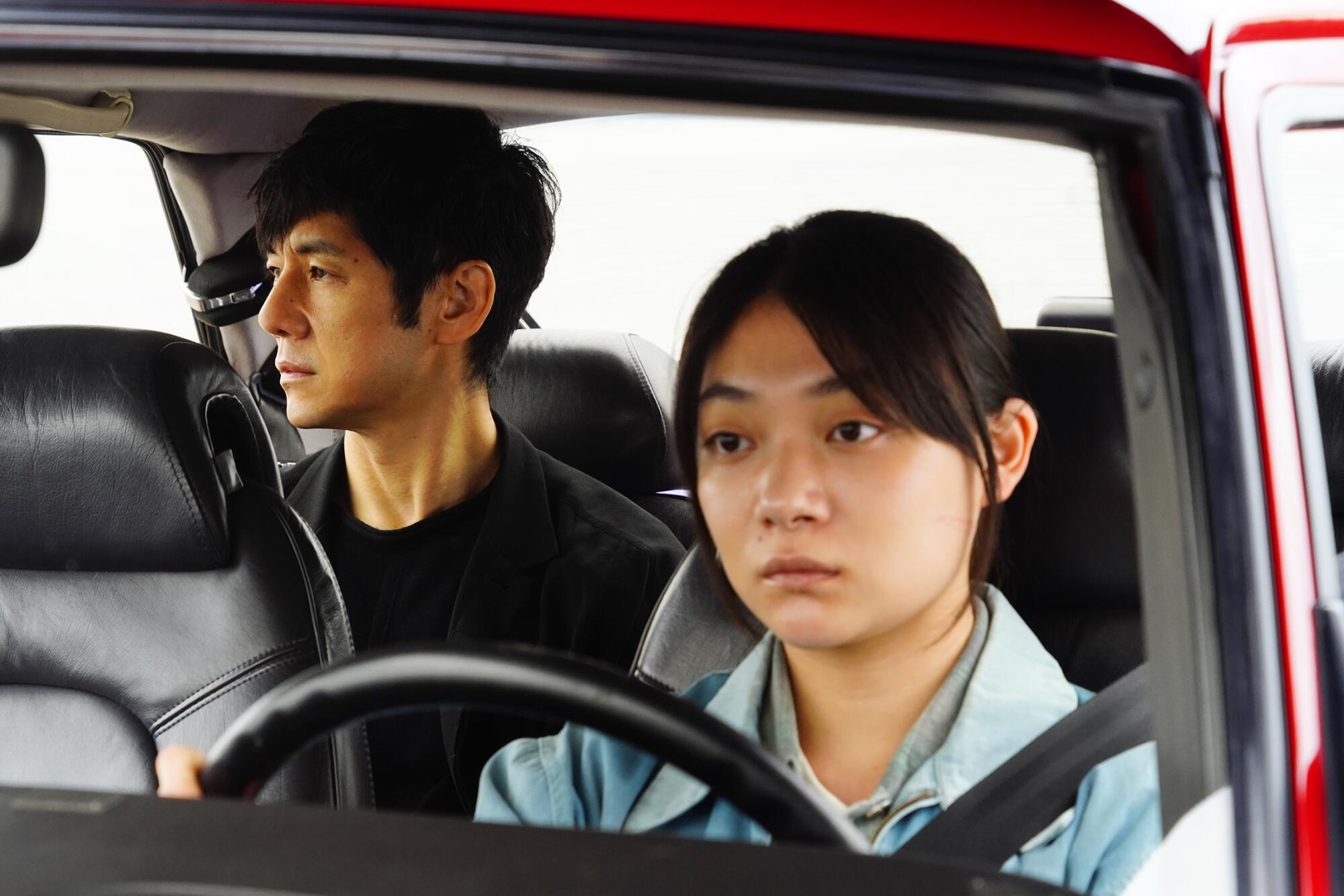- Share via

Hidetoshi Nishijima doesn’t talk a lot in the Japanese film “Drive My Car” as Yûsuke Kafuku, a polite, thoughtful theater actor dealing with the loss of his wife, Oto, while trying to direct a multilingual production of Chekhov’s “Uncle Vanya.” So Nishijima needed faith that the nuances from Haruki Murakami’s source story to director Ryûsuke Hamaguchi’s script to his own performance would get conveyed. “Part of that is deep preparation,” the actor said recently, speaking through a translator. “You also have to trust that the camera and audience will detect these emotions based on a slight change of expression or a gaze in a different direction.”
What kind of preparation went into playing Kafuku?
We rehearsed several scenes that weren’t in the script, to focus on my character’s relationship with Oto. We also went through a series of questions — how do you feel about love, about sex — and how my character would respond to them. Then we did something Hamaguchi is known for, the emotionless line reading. It’s also in the movie. But he does it with his actors.
So the technique Kafuku uses himself when going through lines in his car, and on his cast, of flatly reading the script, is what you all did in rehearsal?
I heard this was something taught by [French filmmaker] Robert Bresson, so I was eager to try it. We’re not delving into the text. We’re coming against it almost physically. No emotions are entering. Hamaguchi is extremely perceptive at the gaps between an actor’s physicality and what they’re saying, the text. So he would fix that as he went along and incorporate that into the script. It wasn’t until we started filming that you put emotion in, and I really felt like every scene, it was almost like a miracle occurred. It seemed like you saw inside the person you were acting with, the treasure inside their heart. I’d never experienced this on any other set.

In the film, Kafuku’s actors bristle at the emotionless read-throughs. Did the “Drive My Car” cast?
This was a rigorous process, but in real life they really did enjoy it. And Hamaguchi as a director was more strict than [Kafuku]!
The pandemic paused filming for eight months. What was that like for you with regards to your performance?
The scenes in Tokyo before Oto passed away were shot before the lockdown. The interval, before [the film] goes on to the second section, is when we had to stop filming, when things shifted dramatically in the world. And I think this actual shift in real life had a very large effect on my performance. It’s hard for me to say concretely, but I think for Kafuku, what he was dealing with was probably the largest change in his lifetime. I think what was happening in the real world affected me in a way that I was able to bring it to my character. Some of that was reflected in the film.
What do you think the movie has to say about grief?
In terms of grief and loss, they’re depicted often, and very well, within Haruki Murakami’s world. There are a lot of situations where the characters feel they can’t go on because of deep grief. For Hamaguchi, the director, he saw the original stories as a question he was trying to answer with this film: how people who are separated in the world overcome these difficulties. This hardship is something you have to face, but it’s aided by the communication between the characters. It’s the only way that they can save each other.
Is art an answer to grief?
Yes, that’s another strong aspect of what’s depicted. Chekhov is considered classic, but it’s brought into the present through this film. It uses present-day words, but it’s based in Chekhov, and people use it to save each other in the film.

Kafuku’s red Saab is a crucial physical and emotional space — did this movie make you look at cars differently?
A car is a very strange space. It’s not your home, but you can say that it’s a very personal space. We can say this especially for Kafuku. It was where he learned and remembered his lines, and it was representative of his existence, which is the reason he never allowed anyone else to drive it. I’d say the car itself becomes a sort of main character. It’s even symbolic in terms of where he sits in the car, when Kafuku is no longer able to drive it, and Oto takes over, and then later, when Misaki [Tôko Miura] becomes his driver.
What was it like to shoot those car scenes, especially the ones where you or other characters open up?
They were actually taken continuously in one shot. But the director, Hamaguchi, wanted to be present for these scenes. So we had this 20-minute ride to a bridge, with the cameraperson and two actors. We went to the bridge, then we came back, and when those 40 minutes were over, Hamaguchi came out of the trunk and said, “That was great, let’s do it again!” He was actually in the trunk!
More to Read
Sign up for The Envelope
Get exclusive awards season news, in-depth interviews and columnist Glenn Whipp’s must-read analysis straight to your inbox.
You may occasionally receive promotional content from the Los Angeles Times.










